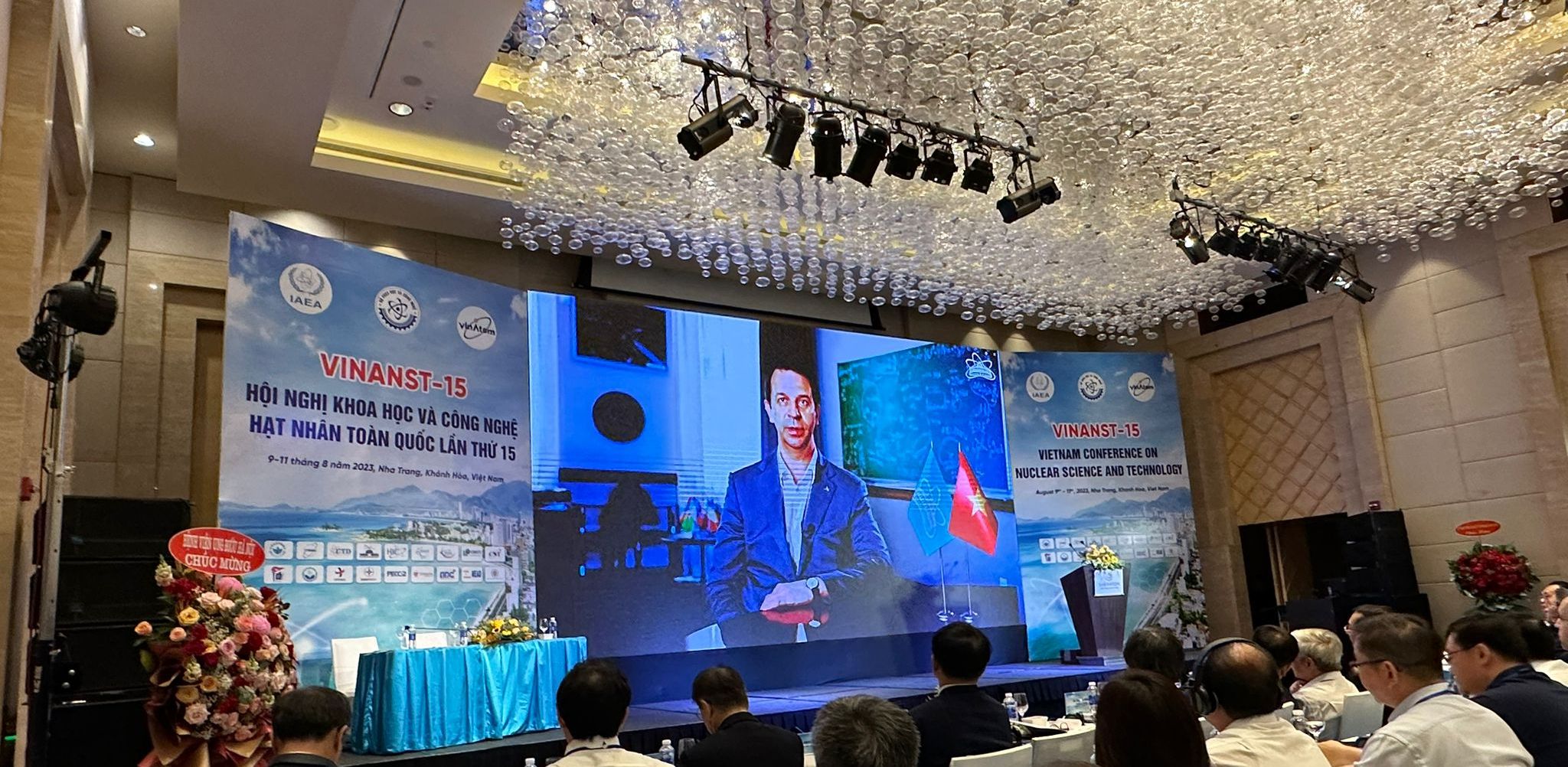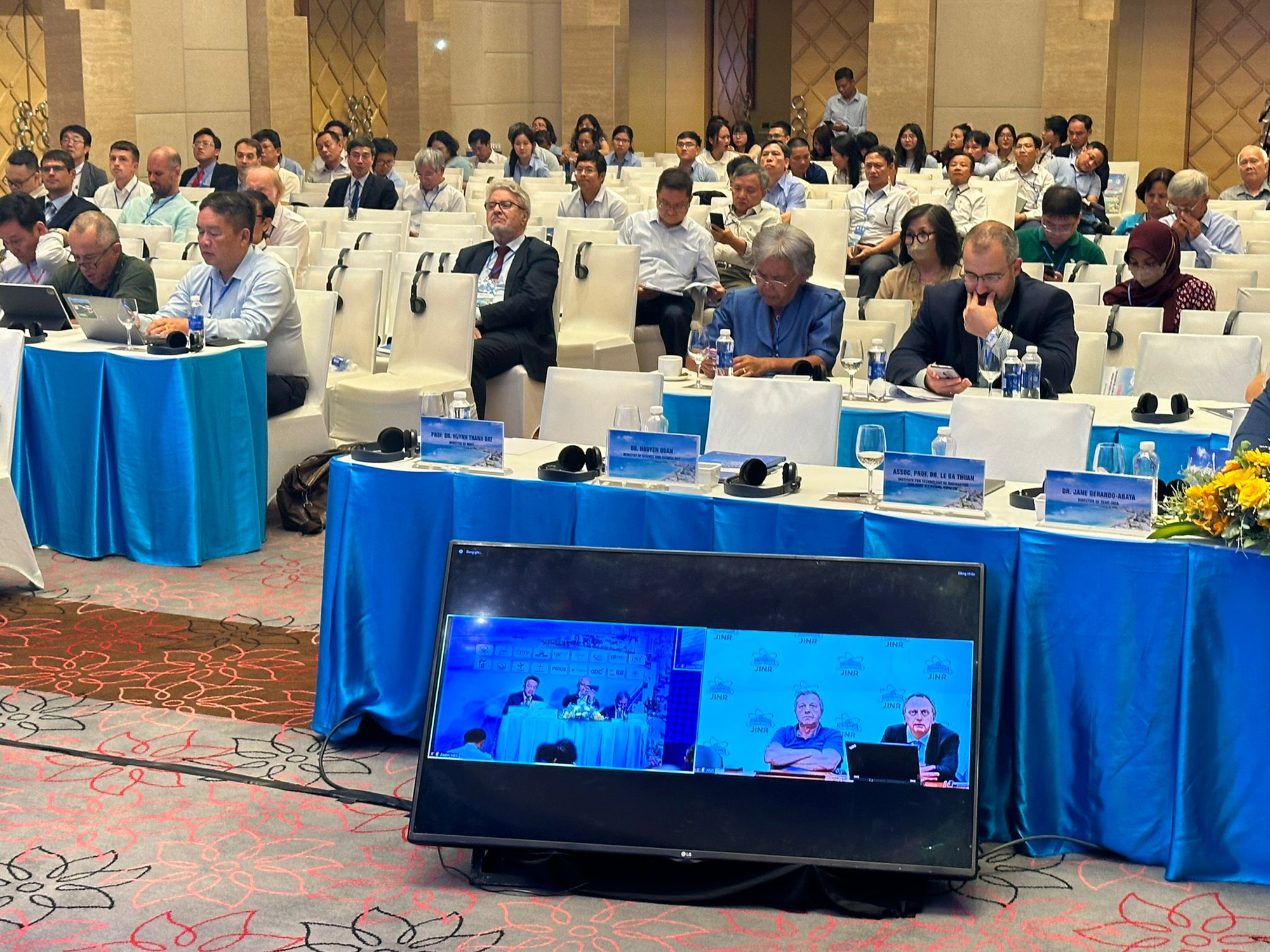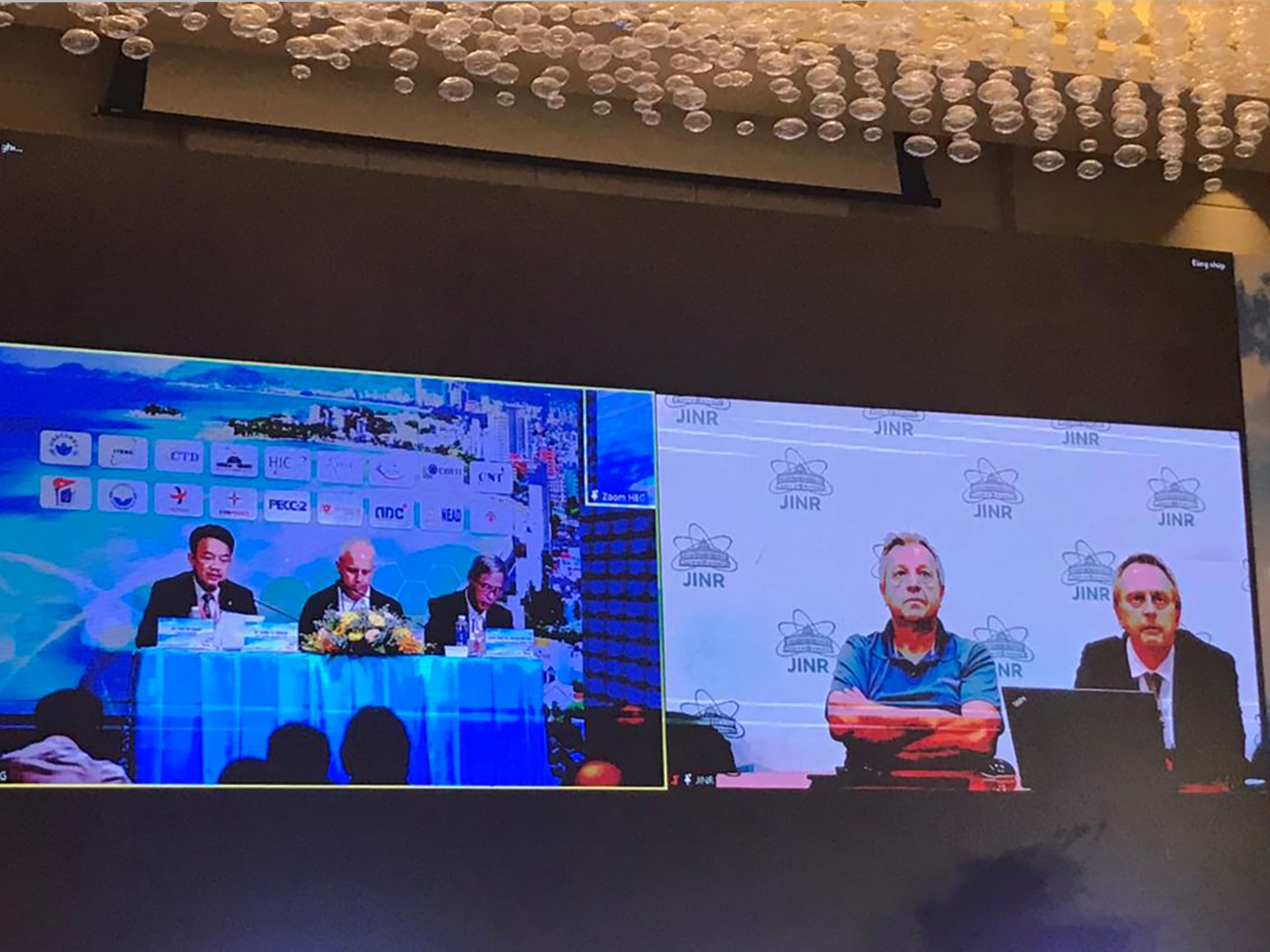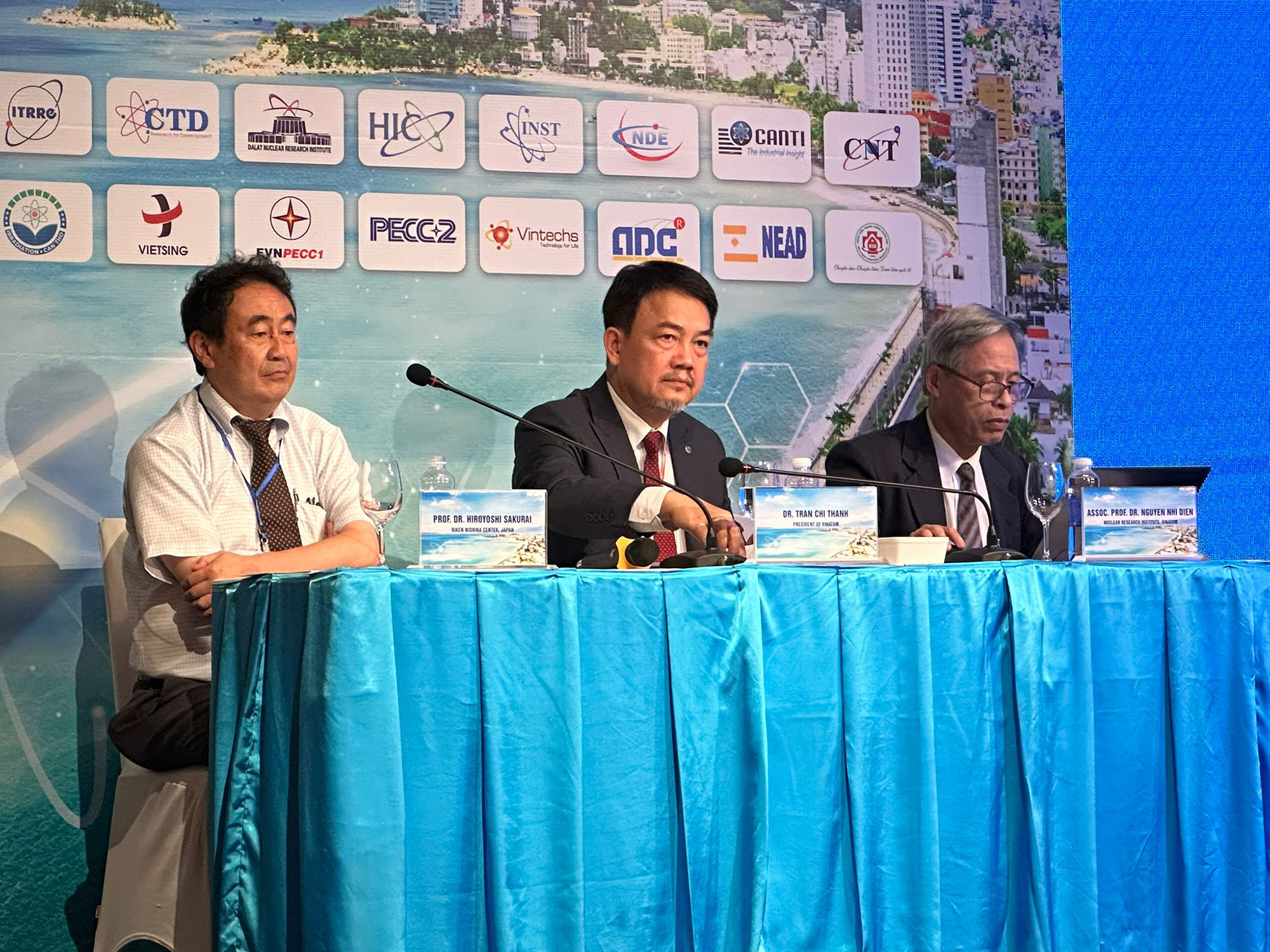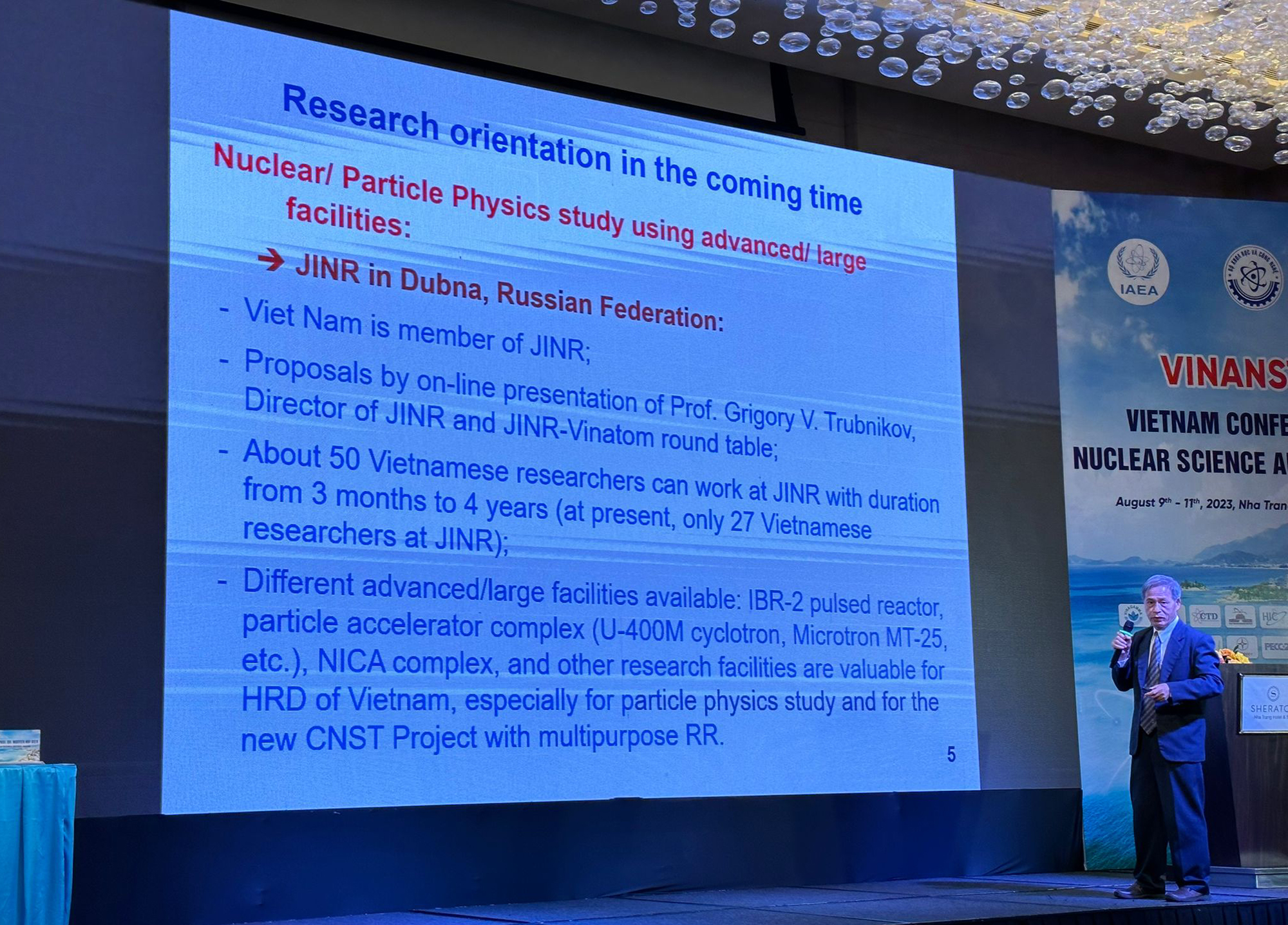JINR scientists at 15th International Conference VINANST-15 in Vietnam
Conferences, 11 August 2023
On 9-11 August, in Nha Trang, Vietnam, a JINR delegation took part in the 15th Vietnam Conference on Nuclear Science and Technology (VINANST-15), organized by the Vietnam Atomic Energy Institute (VINATOM) and the Department of Science and Technology of Khanh Hoa Province. JINR Director and RAS Academician Grigory Trubnikov delivered his welcoming speech at the opening ceremony.
A programme of the Conference included the JINR-VINATOM round table led by VINATOM President Tran Chi Thanh. At the meeting, the parties discussed the results of research conducted by the Joint Institute and prospects for cooperation development between the organizations. JINR Chief Scientific Secretary Sergey Nedelko presented the status and prospects for the development of the multidisciplinary complex of large research infrastructures at the Institute to participants. FLNR Deputy Director Grzegorz Kaminski spoke about the FLNR unique accelerator complex and the possibilities of other experimental infrastructure of the laboratory. Head of the FLNP Nuclear Physics Division Valery Shvetsov presented a research programme in the field of neutron physics, opportunities and prospects for the development of the JINR scientific infrastructure in this direction. A lively discussion completed the round table, during which Vietnamese representatives expressed high interest in increasing the participation of their scientists in JINR activities. In addition, participants of the event stated their intention to actively involve the Joint Institute in tasks in the development of scientific infrastructure in Vietnam.
At plenary sessions at VINANST-15, an FLNP engineer Cao Van Hai spoke about a new type of neutron detector for the Fourier diffractometer. An FLNP researcher Dimitar Grozdanov presented the obtained results of irradiation of silicon and phosphorus oxides. Head of the Sector of Investigations of Neutron-Nuclear Interactions Nikita Fedorov introduced the TANGRA Project on the study of neutron-nucleus interactions using the tagged neutron method to the audience.
As part of the Conference, the International Atomic Energy Agency (IAEA) workshop took place, at which its participants discussed IAEA strategic initiatives in the context of economic and social benefits of the IAEA technical cooperation programme. In addition, speakers presented their reports on social and economic impact assessment of RCA projects in mutation breeding, radiotherapy, and non-destructive testing (NDT).
During plenary sessions, Executive Vice President of the Korea Atomic Energy Research Institute (KAERI) In Cheol Lim, VINATOM President Tran Chi Thanh, and Professor Jozef Misak from the ÚJV Řež Nuclear Research Institute spoke about the history of activities, current research results, and development orientation in the field of atomic energy and nuclear technology of Korea, Vietnam, and the Czech Republic respectively. Dohee Hahn, SMR Technology Coordinator at IAEA, delivered a report on the development and activities of the IAEA related to small modular reactors (SMRs). Professor Hiroyoshi Sakurai from the Institute of Physical and Chemical Research (RIKEN) introduced the infrastructure and advanced equipment at RIKEN, being used to study nuclear physics of unstable isotopes, to the audience. Jeong Kong Lee, a representative of the Korean Atomic Energy Research Institute (KAERI) introduced participants with the status of the Ki-Jang Research Reactor development. Moreover, speakers presented scientific papers on experiments in the ALICE Project at the Large Hadron Collider aimed at studying high energy physics, recent developments in numerical modelling of melt-water interactions in application to steam explosions, rare earth recovery technologies developed by the Korea Institute of Geoscience and Mineral Resources (KIGAM). There was also a report on the necessity and opportunity in management of nuclear physics data. Several reports by Vietnamese representatives were dedicated to the Dalat Nuclear Research Reactor, its core, fuel management and enhancement radioisotope production at the reactor, as well as the current and future use of radiopharmaceuticals in clinical practice in Vietnam.
A poster session at VINANST-15 included 68 reports, including ones delivered by four participants from the Laboratory of Radiation Biology and the Laboratory of Neutron Physics at JINR.
The VINANST Conference is held every two years and brings together scientists and experts in various fields of nuclear physics and technology to exchange knowledge and experience, as well as present results of new scientific research. This year, about 450 representatives from 70 scientific and educational centres from all over the world took part in the event. This year, the topics of the VINANST Conference covered the following areas:
- nuclear power development and human resources training (nuclear power technology and design, reactor physics, nuclear safety);
- nuclear physics, nuclear technologies, nuclear data processing, nuclear analysis methods and accelerator physics;
- radiation measurement, radiation safety, and environmental monitoring;
- application of radiation technologies and nuclear methods in healthcare, industry, agriculture;
- radiochemistry and nuclear chemistry, nuclear fuel cycle, physics and technology of nuclear materials, radioactive waste management.
